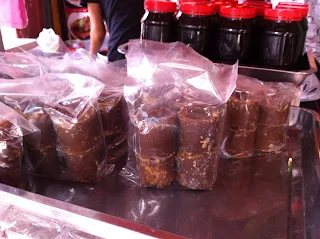Designs on various, current and former parts of the Malaysian Federation seem to not let up.
When the Malaysian Federation was formed in 1963, the Republic of Indonesia under Suharto threatened the formatoom of the Federation, triggering a Confrontation crisis across the Malacca Straits.
Thailand used to have sovereignty over Trenggganu, Kelantan, Kedah and Perlis.
The colonial British authorities referred to them as part of the Unfederated Malay States ( Johore State being the other member).
Penang State's formation was based on some agreement between colonial British Captain Francis Light and the then Kedah Sultan in 1786. The Pearl of the Orient was part of the Sultanate of Kedah when it was relatively undeveloped on the arrival of the British sailing ships ( I am still curious as to why the Portuguese and Dutch did not venture much into Penang Island with impact).
The Kedah Sultanate paid homage to Bangkok royalty then as expressed in the sending of the iconic Bunga Mas to Thai King Rama I. The tradititional vibes of Thai culture and practices can be observed especially in Kedah, which has a Bujang Valley full of important Buddhist archeological troves from before the arrival of Islam. South east Asia was basically under significant religious, language, political and traditional influence from India.
Eastward across the South China Sea from from the peninsular, the decision for Sabah and Sarawak to join the Federation of Malaysia was made by an inner circle of individuals chosen by the departing British - no public referendum was held.
Large portions of Sabah and Sarawak were ruled by the Brunei Sultanate, which had conflicts with the Sulu Sultanate. People from Mindanao historically have ties with Sabah. The significance of the influence of both the Sulu and Brunei Sultanates has often been undermentioned in the annals of the island of Borneo, now shared territorially amongst Indonesia, Malaysia and the compact but oil rich state of Brunei.
The Phllippines today is a nation with a Malay cultural basis, transformed by 400 years of Spanish Catholicism, a hundred years or so of American colonialism and still having millions of Muslims residing in its southern islands. Sulu is part of this flank of the Filipino identity.
Back on the Malay Peninsular, Malacca was a city state founded by a Hindu prince and who had converted to Islam by the time the colonial Portuguese arrived. The port city has historically welcomed trade, migrants, religions, finance and diversity. Its significant role in south east Asia was overtaken by the burgeoning ports of Penang and Singapore. Together the colonial British grouped them up as the British Straits Settlements ( together with the much forgotten district of Dindings in southerm Perak).
Sir Stamford Raffles managed in 1819 to get the Johor Sultanate to part with Singapore after the former realised the strategic potential of the island's location at the nexus between the Straits of Malacca and the South China Sea. Contemporary Republic of Singapore governments are very emphatic in maintaining and developing strong relationships with the Johor Sultanate.
Singapore broke away from the Malaysian Federation after only two years. Its high economic stature in standard of living, growth, financial prowess, governance reputation and technological investment surpasses many other nations larger in land size than her. The Singapore government is ever conscious of her critical role in geopolitics and dependence on imports. Will Johor want to reclaim Singapore?
Will Sulu want to have Sabah back?
Will Penang revert as Kedah territory?
Will the northern Malay States want to rejoin the southern Thai Malay states?
Politics is an ever changing game. Boundaries can be as fluid and pliable as what those in power want them to be.
Nations control parts which can be home to cultures and religions different from their controlling political centre.
The historical basis of which present countries have been formed can be flagged to the side in the game of acquiring resources, opportunities and power.
#yongkevthoughts












